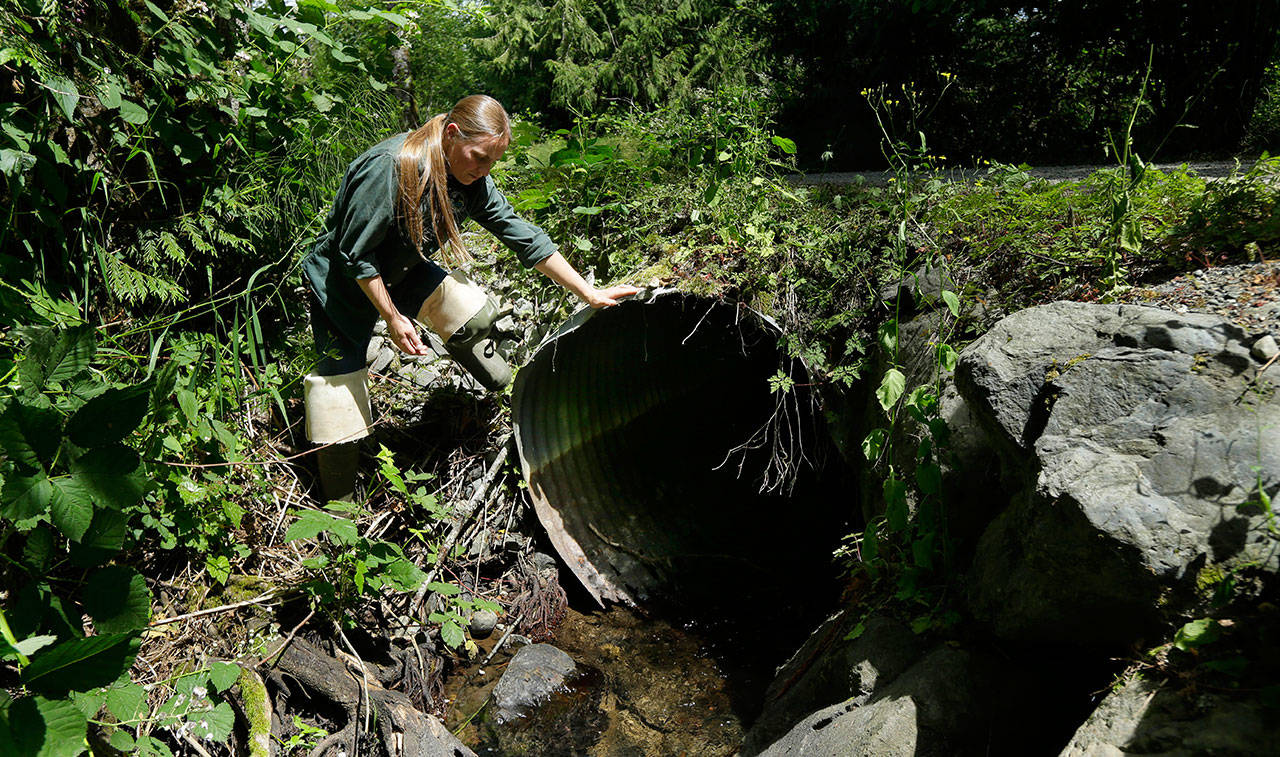By The Herald Editorial Board
It’s been 20 years since Washington’s Legislature adopted the Forests and Fish Agreement, a pact among private timberland owners, county, state and federal agencies and tribes that outlined how logging would continue on more than 9.3 million acres of private and state forestlands while protecting salmon habitat on more than 60,000 miles of streams that run through those lands.
What galvanized often opposing interests in that agreement was a string of determinations under the federal Endangered Species Act that — beginning with the Snake River sockeye in 1991 — listed distinct salmon species as either threatened or endangered, with the potential for triggering severe restrictions meant to protect the fish. Two years into Gov. Gary Locke’s first term, 12 species in the state had been listed for protection under the ESA.
“Salmon were on the brink of extinction,” Locke, who signed the Forest and Fish Agreement in 1999, told a November meeting of the Washington Forest Protection Association.
“We knew we did not want the federal government dictating to us on how to save salmon, but we also knew we could not solve this problem by ourselves,” Locke said.
The Forest and Fish Agreement, approved by the federal government in 2006 and heading off enforcement under the ESA, set out a 50-year salmon recovery plan that required private forestland owners to set aside buffer zones along streams and replace culverts beneath roads that were blocking salmon from spawning beds.
Now 20 years on, the Washington Forest Protection Association reports, more than 8,000 culverts and other salmon barriers have been removed, opening up more than 5,200 miles of fish habitat with millions of acres of riparian buffer zones set aside to protect those streams. Unstable slopes have been addressed to limit landslides into habitat, and logging road drainage systems have been improved to cut down on sediments in streams.
With work monitored by the state Department of Natural Resources, WFPA, which represents private forestland owners, says it is closing in on its goal to eliminate 100 percent of salmon barriers on those lands by 2021.
While preserving salmon habitat, the agreement also has protected an estimated 101,000 jobs tied to the state’s timber industry — the second largest lumber producer in the U.S. — generating $5.5 billion in wages. In Snohomish County, where more than 80 percent of the county is forestland, the industry supports nearly 6,300 workers, generates $325 million in wages and $11 million in tax revenue.
Sierra Pacific Industries, the second-largest forestland owner in the state behind Weyerhaeuser and a member of the industry group, is a relative newcomer to the state since arriving in 2001. But rather than a shying away from the mandates of the Forest and Fish Agreement that went into effect shortly before its arrival, the pact is one of the reasons it continues to invest in Washington state, company officials told The Herald Editorial Board recently.
It’s worth noting that Sierra Pacific has made investments in California and Washington, but not Oregon, which has lagged in implementing forestry rules, compared to its neighbors.
“We’re doing this kind of business in the two states with the strongest environmental protections in the world,” said Lisa Perry, community relations manager for Sierra Pacific. “And we choose to do that because we have some stability here.”
With a resource that grows over a 40- to 80-year period, timber companies rely on the regulatory certainty and predictability that the 50-year salmon recovery plan offers, said John Gold, district manager for Sierra Pacific.
The accomplishments seen on 8 million acres of private forestlands and another 1.3 million acres of state-owned forestlands are vital to saving salmon, but much more work is necessary. Even with those habitat improvements, the threat to salmon — and the species that rely on them, such as the orca whales — remain. Since Locke’s tenure as governor, five more salmon and steelhead species have been listed under the ESA.
The forestlands often represent the very end — and beginning — of salmon’s reproductive journey; there remain habitat and other impacts to salmon downstream from the forests as streams and rivers wend through agricultural land, through suburban and urban developments and industrial areas and into estuaries and bays.
While the work to replace culverts in forestlands is important, it’s dwarfed by the diminished habitat that remains downstream and is the responsibility of the state and local governments.
An estimated $2 billion will have to be spent to replace culverts and other salmon blockages downstream from spawning habitat. And that money will have to be spent. In 2018, the U.S. Supreme Court affirmed a lower court ruling that requires the state to fix hundreds of the highest-priority culverts by 2030. While such work is ongoing, the Legislature hasn’t put the highest priority on funding additional projects. In the last session, in a major budget year, just $100 million was allocated for the work.
To be fair, private forestland owners over the last 20 years have spent more than $200 million to fix their roads and culverts; it’s less expensive, after all, to replace a culvert under a logging road than under an interstate highway.
But the private forestland owners have — at their own expense — kept their end of the deal and in some cases have made habitat improvements that salmon can’t reach unless blockages are dealt with downstream.
“Everybody’s got to do their part in order for salmon to be able to swim and survive treacherous waterways through all these different land uses,” said Cindy Mitchell, director of public affairs for the Washington Forest Protection Association.
“The rallying cry,” Locke said regarding the Fish and Forest Plan, “was that extinction was not an option.”
Twenty years later, it’s still not an option that can be allowed.
Talk to us
> Give us your news tips.
> Send us a letter to the editor.
> More Herald contact information.

























